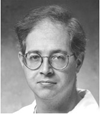"Cardiac Transplantation following DCD should be an Oxymoron." -Mike O'Connor.
No matter how cynical you get, it is impossible to keep up. -Lilly Tomlin
As the saying goes, "you can't make this stuff up." This is in reference, of course, to the recent NEJOM article entitled Pediatric Heart Transplantation after Declaration of Cardiocirculatory Death. In this study, two infants had their hearts harvested following 75 seconds of asystole. The very first post of this blog was titled with a Thoreau quote; "Distrust any enterprise which requires new Clothes." That might be aptly rephrased in the present instance to "Distrust any behaviors which require new ethical language." Obviously, here, Donation after Cardiac Death would be a misnomer, since the heart is nothing like dead, so the designation has been quietly and not-so-subtly modified to cardio-circulatory death. This seems like a further slippery step along the path to a utilitarian transformation of the ethical calculus of donation. Initially, when Beecher et al advanced the definition of brain death, the inevitability of corporal death was a given. Then, in response to a shortage of organs, the line was moved to allow the hastening of death through Donation after cardiac death. Make no mistake, this new designation of cardio-circulatory death, and its ethical rationale represents a fundamental shift again, towards a paradigm of "relative" utility; the implicit argument is that the recipient can make better use of the organ than the donor. This all takes place under the cover of compact between the donor's guardian, the recipient, and the intermediary technicians (transplant surgeon, etc.)
Given the circumstances, why not simply dispense with the 75 second delay? Why damage the donor heart even that much? The ethical justification seems somewhat, ahhh, tortured. (how many angels can dance on the head of a pin?) The argument is that no instances of auto-reanimation have been documented after 60 seconds. (I have seen it, but never mind that...) Therefore, having withdrawn life support to the point that the heart has arrested, if we wait 75 seconds, we can be ethically justified in concluding that the patient is sure to die. But, of course, the patient is sure to die anyway given all intentions, aren't they? They arrived in the operating room alive, and their death is being effected by pre-arrangement on the grounds that it was bound to happen sooner rather than later, anyway. This is no simple reductio ad absurdum argument; the whole rationale has been pushed to absurdity in fact, and the obvious self-justifying sophistry of the argument is itself condemnatory.
If this NEJOM article represents a (ghoulish) feasibility study, than it has accomplished its goal. It would be unfortunate if this demonstration were allowed, of itself, to justify a new ethical boundary. This blog has already discussed the potential for mischief in DCD procurements. DCCD presents alarming ambiguity in the technical and ethical underpinnings of this process that carries with it far-reaching implications which demand urgent discussion and resolution. For instance, given the utilitarian formulation, how can medicine continue to condemn physician participation in execution, and why aren't we using the organs of the executed? Fortunately, in the same issue, the Journal has undertaken to drive a discussion of the ethics of this whole process, which must be national, indeed, international, in scope.
Hopefully, we'll come to our senses....
 Mitch Keamy is an anesthesiologist in Las Vegas Nevada
Mitch Keamy is an anesthesiologist in Las Vegas Nevada
 Andy Kofke is a Professor of Neuro-anesthesiology and Critical Care at the University of Pennslvania
Andy Kofke is a Professor of Neuro-anesthesiology and Critical Care at the University of Pennslvania
 Mike O'Connor is Professor of Anesthesiology and Critical Care at the University of Chicago
Mike O'Connor is Professor of Anesthesiology and Critical Care at the University of Chicago
 Rob Dean is a cardiac anesthesiologist in Grand Rapids Michigan, with extensive experience in O.R. administration.
Rob Dean is a cardiac anesthesiologist in Grand Rapids Michigan, with extensive experience in O.R. administration.
Comments